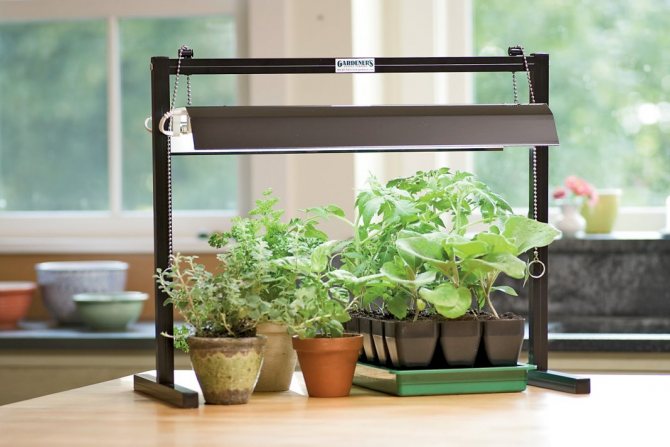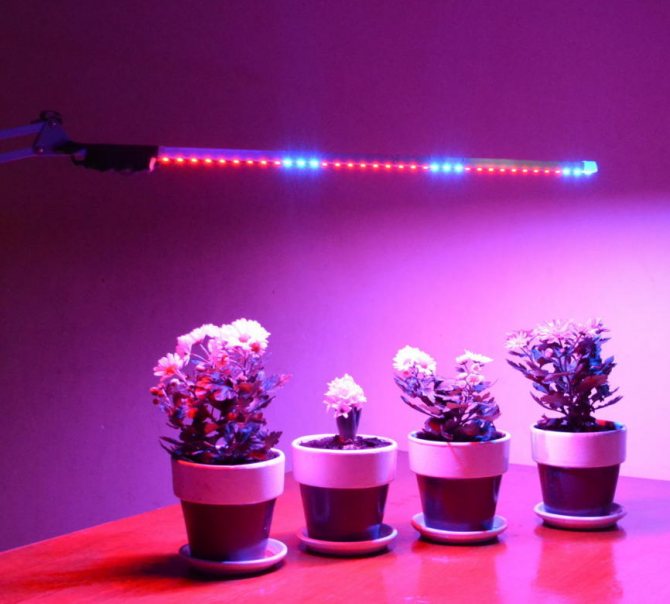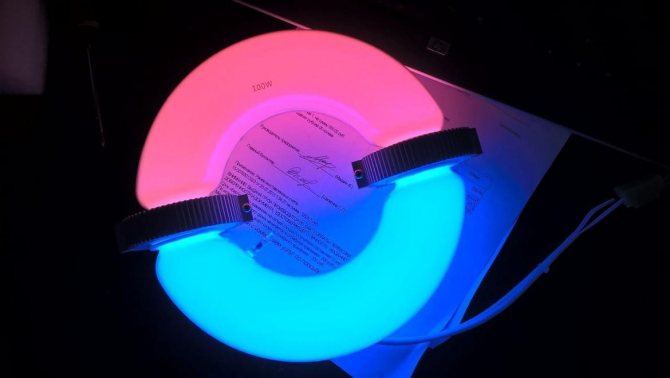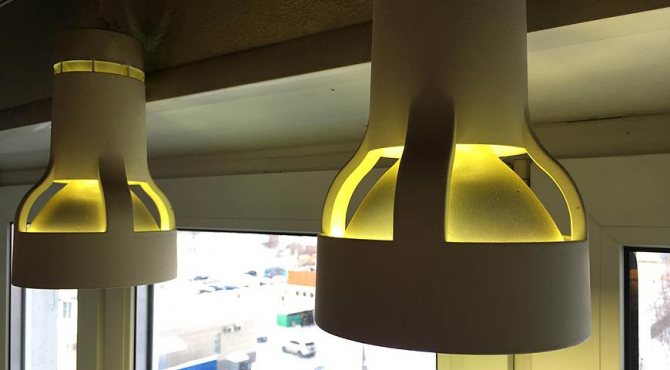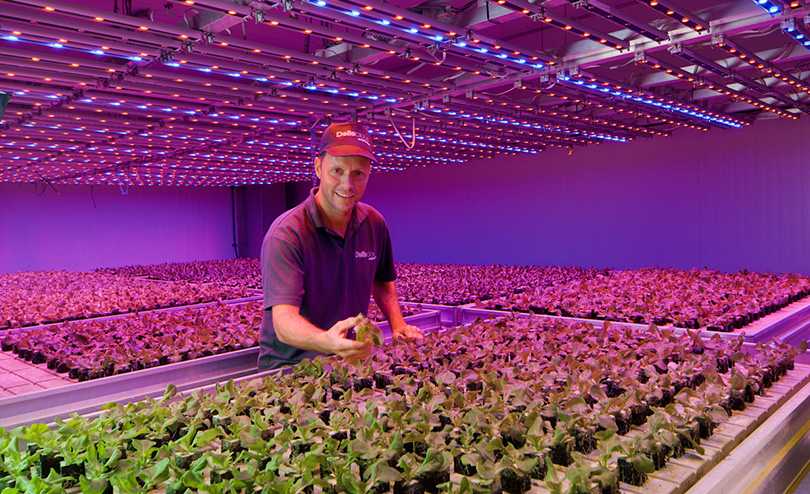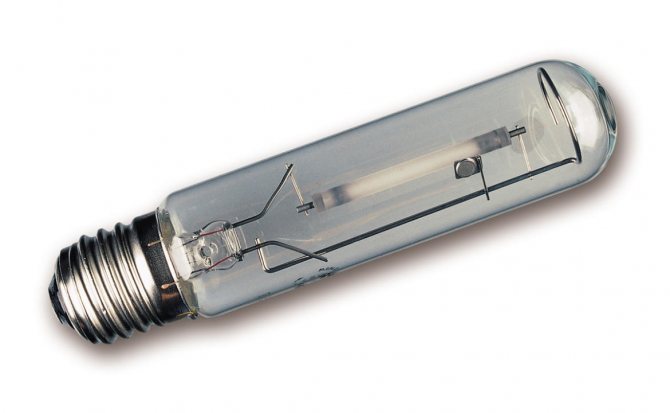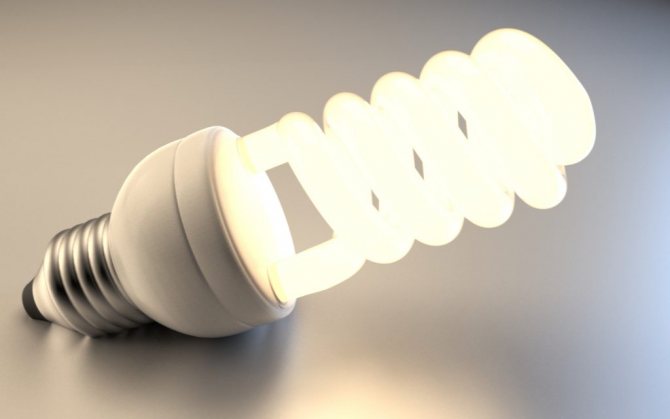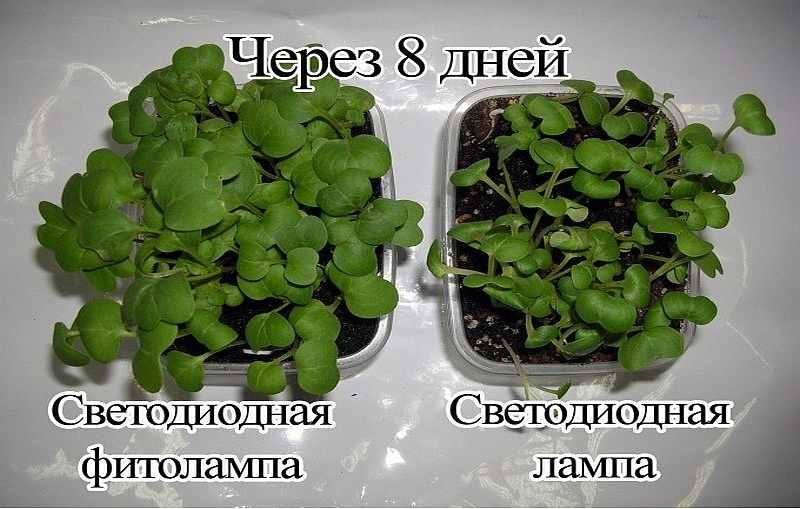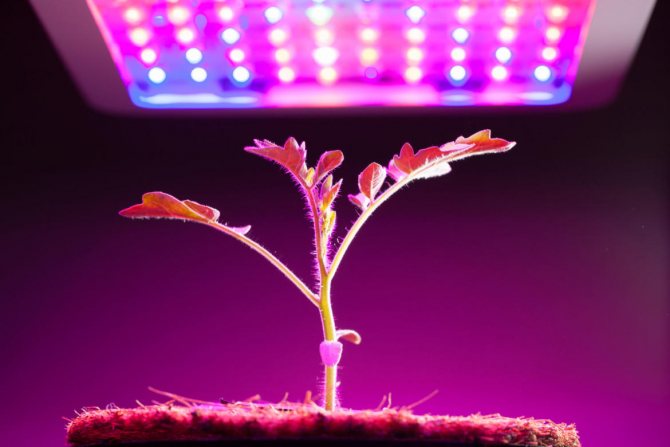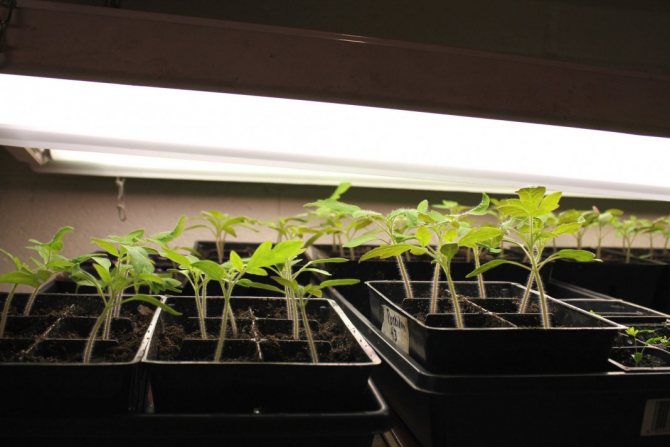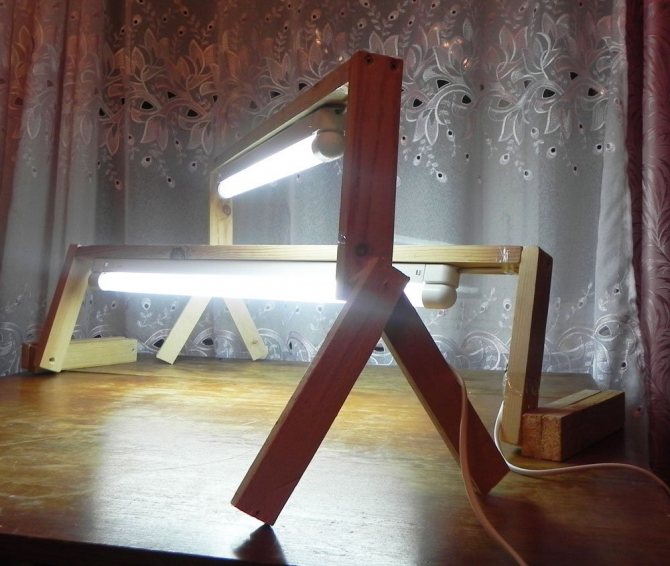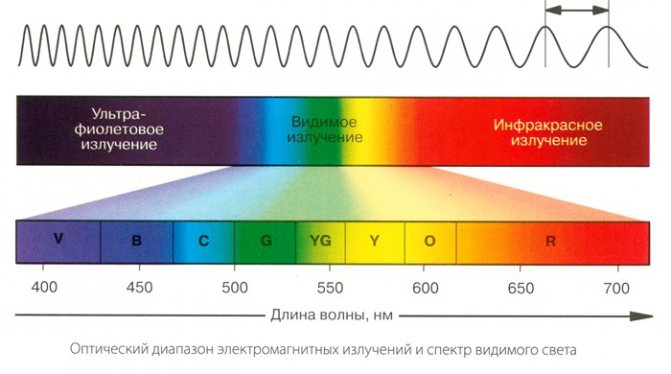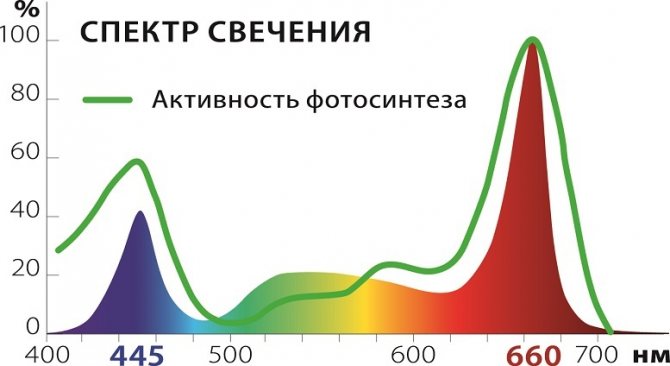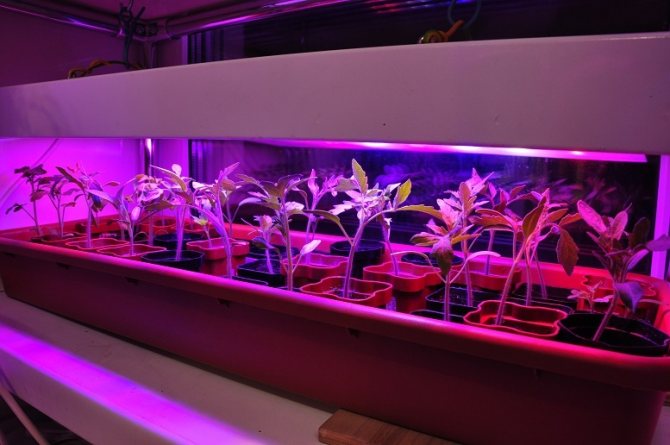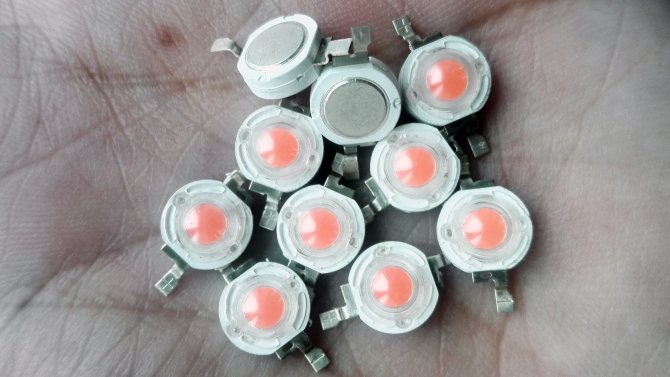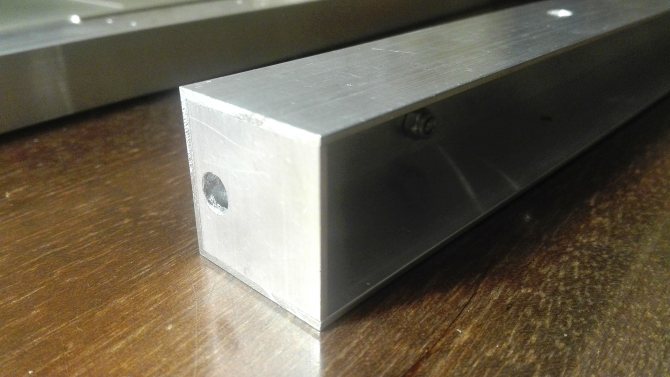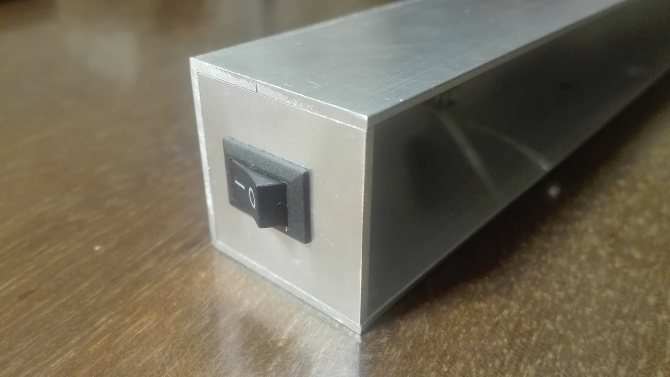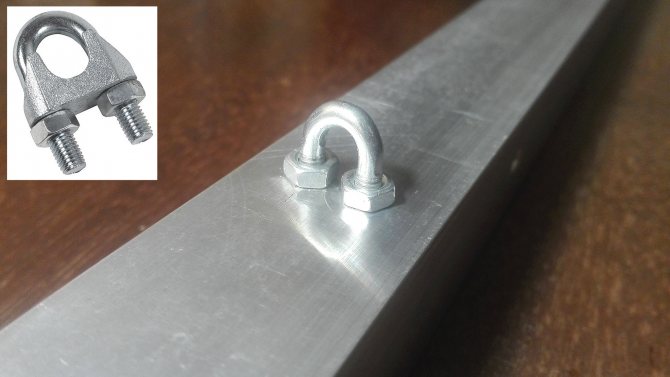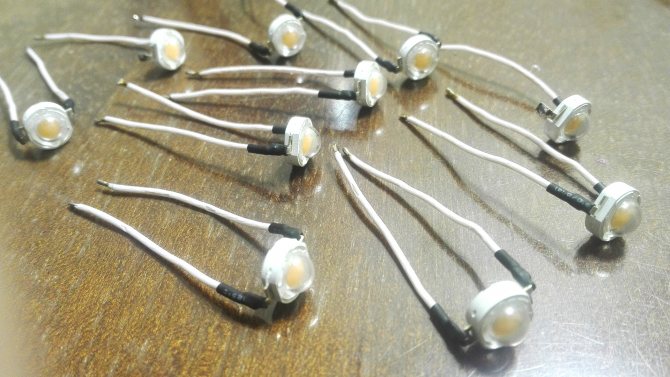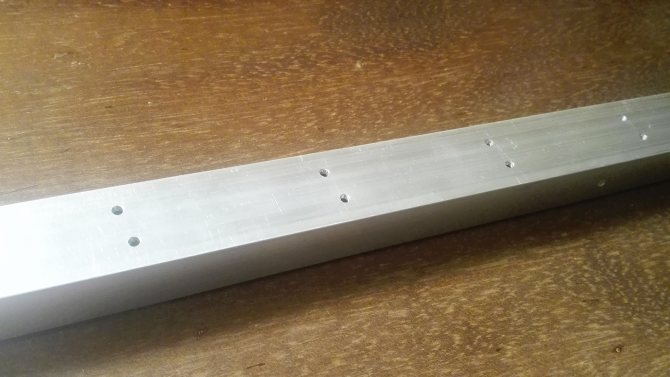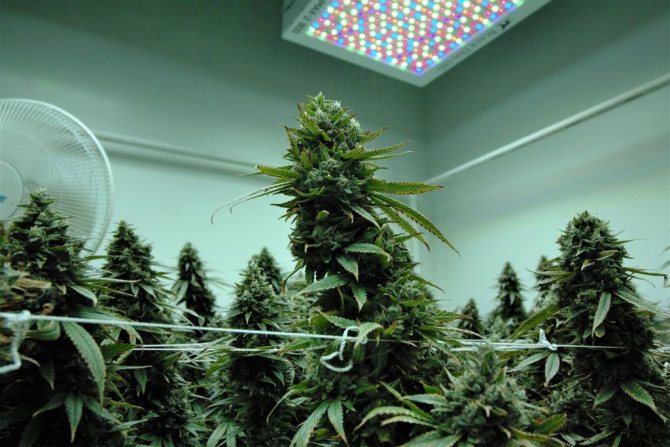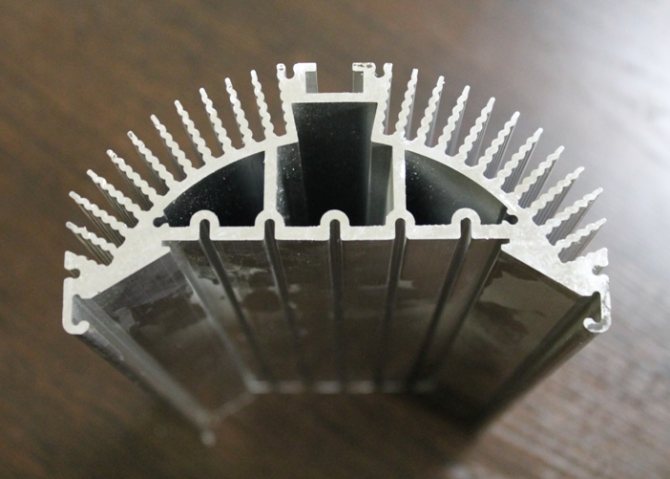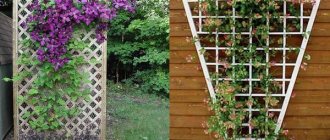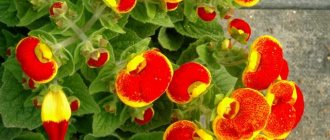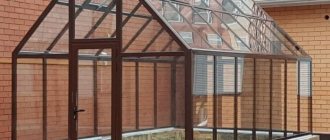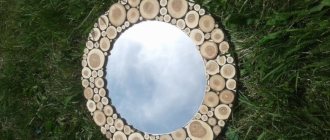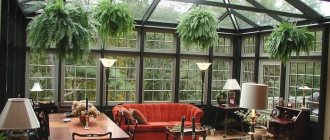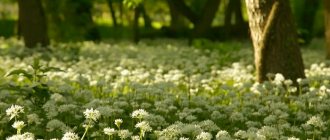Most heat-loving plants in the Russian climate are grown through seedlings. Tomatoes are no exception. For greenhouse varieties of tomatoes, the sowing time starts from January, for placement of crops in the open field - from the end of February. During this seasonal period, there is not enough sunlight for plants for proper development, therefore artificial lighting is additionally required. How to light up tomato seedlings correctly in an apartment is known only to experienced vegetable growers, whose recommendations are presented in the article.
What is phytolamp
A phytolamp is a special light source that emits a specific spectrum of radiation that helps plant growth and development. These include lamps that shine in the most natural way, i.e. close to sunlight, light.

Diagram of the dependence of processes in plants on wavelength
The diagram shows that the intensity of photosynthesis and photomorphogenesis occurs most fully at different wavelengths of light. Chlorophyll also "loves" its wavelength. By the way, it can be of two types: A and B.


Spectrum for chlorophyll A and B
Chlorophyll A is the main source of plant nutrition. Chlorophyll B accelerates the growth of aboveground green mass.
From both diagrams, it is clear that the most useful spectra for plants will be blue (420-460 nm) and red (630-670 nm). These are the ranges of the spectrum provided by the phytolamp.
LED bulbs (LED bulbs)
Recently, LED bulbs are gaining popularity.
- The service life is approximately 50,000 hours.
- It consumes a minimum of energy and is environmentally friendly.
- These are full spectrum lamps, so they can emit any segment of the spectrum.
- LED phytolamps are screwed into a regular luminaire.
- The spectrum lacks ultraviolet and infrared waves.


- The ability to regulate the intensity of radiation is allowed.
- It is customary to illuminate seedlings with rgb models. In this case, the abbreviation is the first letters of colors in English: red, green, blue, which are in the spectrum.


- The most popular is the uniel lamp, which is the leader in terms of service life and luminous efficiency.
- A controller is introduced inside the device, which regulates the light of the bulb. Plants on the windowsill are illuminated in red and blue, and when people are in the room, the remote control switches white, pleasant to the eyes, light.
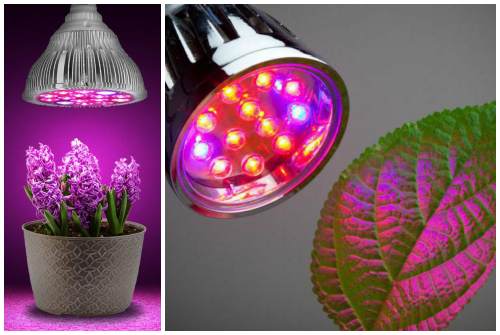

Features of plant lamps


Spot illumination
Phytolamps are designed to illuminate plants, including seedlings, in winter and early spring. Poor winter light is not enough for healthy development. And the highlighted plants are developing correctly:
- Chlorophyll A and B are absorbed, which promotes the growth of the root part and the general nutrition of the plant.
- The root system is developing well.
- Metabolic processes are accelerated.
- Improves plant immunity and appearance.
Phytolamps are energy saving devices. They consume an order of magnitude less energy than conventional lamps. This applies to phytolamps made on the basis of LED lamps.
Long lifespan also belongs to the benefits of plant lamps. On average, it is up to 100,000 hours of continuous use. Of course, no one uses phytolamps continuously: plants need to rest in the dark at night.
Special flower lamps are safe for plants: they only heat up to 55 ° C. Therefore, they must be placed at a short distance.
Can incandescent bulbs be used?
Incandescent devices are not suitable as a lamp for illuminating seedlings; special devices for germinating and forming leaves and stems are suitable. Bushes, illuminated by standard lamps, will not be able to form, acquire immunity sufficient to move into open ground.
Incandescent lamps are also not recommended due to their uneconomical energy consumption. The luminous flux accounts for no more than 4.6%, thermal energy - about 95%. When using incandescent lamps, seedlings may be burned. The spectral characteristics of the devices also do not correspond to those recommended for seed germination, development of leaves and branches.
The choice of phytolamp
When choosing a light source for plants, please specify:
- Lamp shape. For a window sill or a long shelf, you should choose a linear lamp. If you need to highlight one pot or a small area on a shelf, then it is better to choose a basement phytolamp.
- Spectrum. The values of the optimal wavelengths for growing plants have already been mentioned above: 420-460 and 630-670 nm. It is worth checking if the lamp provides such ranges. This can be done by looking at the spectrogram on the packaging. On the spectrogram, you need to look for peaks in the blue and red parts of the spectrum.
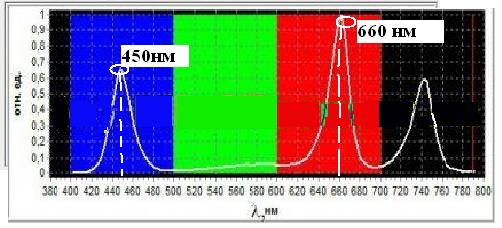

Spectrogram
It is better if in the blue area the peak falls at 440-450 nm, and in the red one - 650-660 nm. If there is a strong deviation from the optimal values of the spectrum, you should not buy a lamp.
- Power. For indoor plants and seedlings, a good option is a lamp with a rated power of at least 25-30 watts. It should be borne in mind that manufacturers must indicate the nominal and real power, and the real one must be less. This is a sign of a good quality lamp.
- The ratio of the power, the illuminated area and the height at which the luminaire is suspended. Start with the fact that with an increase in height by two times, the luminous flux decreases by 4 times. The more powerful the lamp, the higher it can be hung. For example, it is recommended to hang a led lamp with a length of 50 cm and a power of 25 W at a height of 15-30 cm.And a similar device with a power of 50 W - at a height of 20-50 cm.
- Lamp radiator area. The larger the area, the better the cooling will be, the longer the phytolamp will last.
- The material from which the lamp is made. A good choice is the aluminum case. The advantage is that aluminum also serves as a heat sink for LEDs. It is not recommended to take a luminaire with a plastic body.
- Convenience of service.
- Economic factors: the feasibility of using phyto lamps for growing plants. After all, they are quite expensive.
How to choose the best luminaire option
For indoor flowers, use the following lighting modes:
- 1000 -3000 lux - for growing in a darkened room, far from the window;
- 3000 - 4000 lux - for those in need of a diffused stream of light;
- 4000 - 6000 lux - for those in need of direct lighting;
- 6,000 - 12,000 lux - for exotic fruit bearing species.
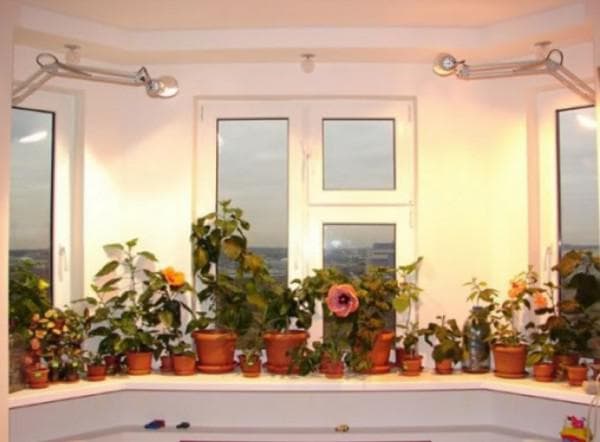

Beautiful flowers are the key to comfort in your home
You can find detailed information on the properties and rules for choosing phytolamps for seedlings here.
Red LEDs are essential for plants when they bear fruit or flower. There are two wavelengths of red LED: low-absorbance and long-range. Promotes the formation of group A chlorophyll. In diode lamps, more red lamps are used than white or blue.
Types of phytolamps
Plant fixtures differ in the type of bulbs used.
Sodium lamps (DNaT and DNaZ). Not suitable for living spaces: too bright. For lighting 1 m2, 100 W of power is laid.
pros
- high light output;
- long service life;
- wide range of operating temperatures (from -60 ºС to +40 ºС);
- effective for flowering and ripening fruits, since the spectrum of arc lamps is in the red zone.
Minuses
- strong heating of the flask - explosion hazard when water drops and a long distance in order to prevent burns in plants;
- instant access to operating mode - it takes 5-10 minutes;
- special disposal due to the content of mercury vapor;
- the need for control gear;
- inability to focus the light flux.
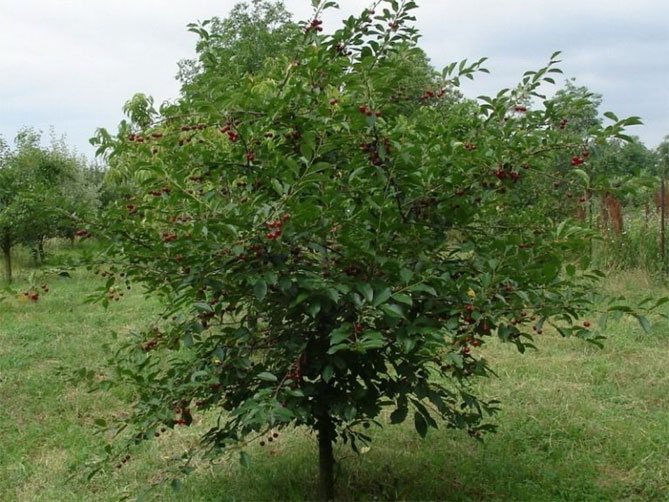

Sodium phytolamps
Fluorescent lamps (LL). Since the spectrum is shifted towards ultraviolet radiation, which has a good effect on the root system, LL are more suitable for growing seedlings. Luminescent phytolamps are distinguished separately. Due to the light emitted, they can be called pink lamps. The pink tint of light (mixing the blue and red spectrum) is obtained by applying a special phosphor.
pros
- profitability: relatively low price and energy efficiency;
- the absence of heating does not require a large location height;
- selection of lamps according to the spectrum of luminescence: warm light (3000-5000 K) for the flowering period, cold (above 6000 K) for the growth of the root system and universal daylight for the entire period of plant growth.
Minuses
- low power: two lamps are required for sufficient illumination;
- it is difficult to use in permanently inhabited residential premises: the blue spectrum will irritate human vision;
- difficulties with disposal due to the content of mercury vapors;
- difficult to use in greenhouses for growing cold-resistant plants: LL are difficult to ignite and work poorly at low temperatures (flicker).
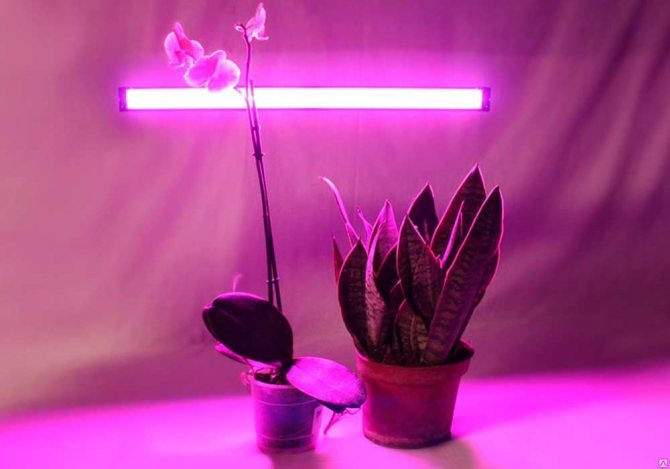

Pink light from LL
Energy saving phytolamps (housekeepers). A variety of LL. The control gear is built into the E27 base. Phytolamp is convenient for highlighting individual plants. Housekeepers do not heat up and consume little electricity.
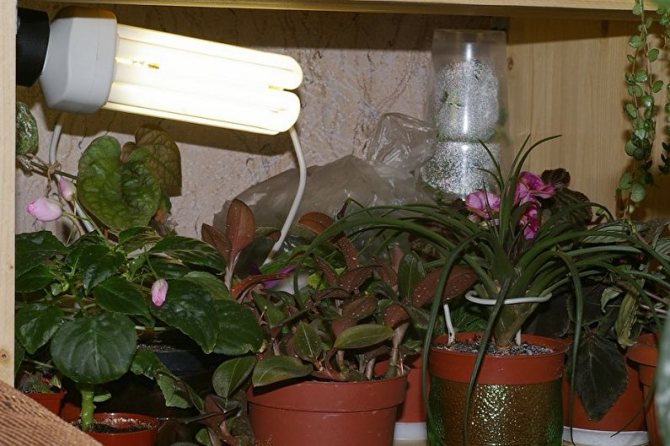

CFL
Induction lamps. The principle of operation is the same as that of LL, but the design is slightly different: there are no electrodes inside the bulb. Because of this, the service life increases: up to 15-20 years with a 12-hour operating mode. In addition, over time, the luminous flux does not decrease, since there is no burnout of the electrodes. Induction lights are expensive. They do not heat up well. The spectrum is suitable for growing plants.
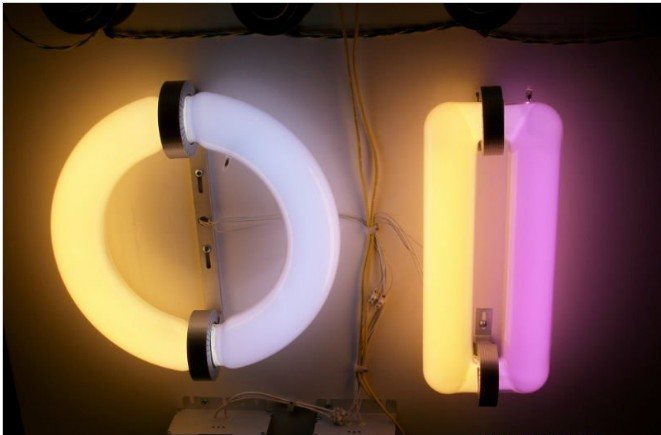

Induction light sources for plants
LED phytolamps. One of the nicest types of plant growing lights. It is convenient to illuminate seedlings with RGB lamps. These are LED bulbs with three crystals (red, green and blue) in one housing. Such light sources are controlled with the help of a controller: you can illuminate the plants in turn with red or blue light, and in front of people in the room, switch to white light mode.
pros
- long service life: up to 50,000 hours;
- low power consumption;
- good radiation spectrum;
- no problems with disposal;
- heat up a little.
Minuses
- There is only one drawback: the cost of led phytolamps.


LED lights
The following lamps are distinguished by the spectrum of luminescence:
Bicolor with sharp peaks in the red and blue regions of the spectrum. Recommended for:
- backlighting plants in places with a minimum amount of the solar spectrum, window sills and balconies;
- growing seedlings;
- backlights in winter and on north-facing or shaded windows.
Full spectrum. Lamps with broad peaks in the red and blue regions of the spectrum. Versatile, suitable for almost any plant. They are inferior in efficiency to bicolor ones, but they win in the supply of artificial light, similar to the sun.
Multispectral. The spectrum combines red, blue, warm white and far red light. This spectrum stimulates flowering and fruiting in many ornamental plants (orchids, adeniums, etc.). Suitable for growing plants in the absence of sunlight.
How does illumination affect seedlings?
Backlighting for seedlings is necessary to ensure the stable development of plants, flowers, fruit bushes.Good illumination is an important condition for seed germination, the formation of leaves, stems, and ovaries. With an insufficient amount of sunlight, the photosynthetic apparatus of seedlings ceases to function, the growth of the root system and leaves slows down. The stems can begin to stretch, bend, curl. The immunity of plants is disturbed, the seedlings lose their quality characteristics, which further affects the yield, the size of the fruits.


Light spectrum of lamps
Additional lighting lamps have different color spectra:
- red;
- blue;
- purple;
- yellow;
- green.
The presence of red spectrum lamps in the device increases the germination of seed. With the further development of the bush, the shade of the spectrum contributes to the harmonious development of the variety, stable growth of the stem, branches and leaves.
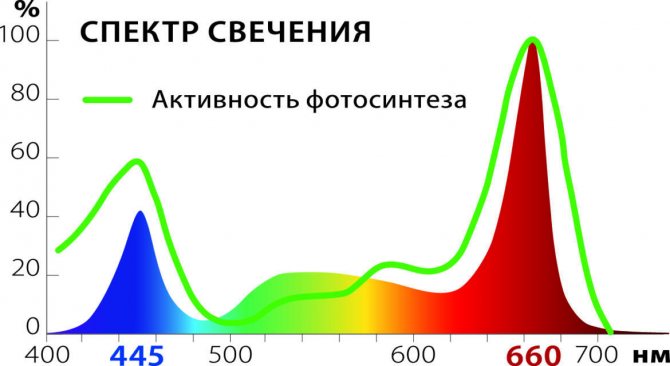

Light spectrum most affecting plant growth
The colors of the spectrum blue and violet help the formation of cells, increase the rate of their division. Shades of blue in the phyto-lighting device prevent the stems from stretching, the plant harmoniously forms the shape of the crown. The stems acquire the required density and thickness. The cold range contributes to the harmonious growth of ornamental plant varieties.
The shades of the spectrum, green and yellow, are intended to balance other colors in the agrolamp, because reduce the harmful effects of infrared, ultraviolet lamps.
When deciding which phytolamp is optimal for growing seedlings, it is important to take into account that it is not recommended to use 1 color of the spectrum. It is necessary to combine several tones for a complex effect on stems and leaves at different periods of development. The range of intensity of shades can vary depending on the type of plant, season.
When choosing a lamp for seedlings, it is important to determine the design and dimensions of the device, the backlight power, the efficiency, and the presence of a reflector.
1 lux = 1 lumen / 1 square meter
In the description of lamps, you can often find lumens and suites. People often confuse these units of measurement with each other. Lumens measure the amount of light emitted from a lamp. And in suites, they measure the degree of illumination of an object. In fact, everything is simple, for example, there is a lamp emitting 1000 lumens, if you place it above a table with an area of 1 square meter, at such a distance that all its light falls on the table, then the illumination of the table will be about 1000 lux.
DIY plant lamp
If you have at least minimal knowledge and skills in electricity, then you can try to make a phytolamp with your own hands. Moreover, it is not very difficult.
You will need:
- LEDs or LED strip;
- power supply unit (driver) with a voltage of 12 V of sufficient power (you can take a working charger from an old phone: instead of a USB wire, solder a connecting one);
- connecting wires and connector;
- U-shaped aluminum profile (as a last resort, you can replace it with a 2 mm thick PVC sheet);
- heat conductive adhesive (as a last resort, you can use a car sealant).
The electrical circuit for the phytolamp looks like this:


The connection of the LEDs is serial, since it allows you to connect more LEDs at the same time. In this case, the current remains constant. The number of LEDs must be calculated.
A simple phytolamp requires red and blue LEDs. Depending on the purpose, the following color combinations can be distinguished:
- for plant growth, it is advised to take either only blue led, or the ratio of red and blue 4 to 2;
- to stimulate fruiting, a ratio of 6 reds to one blue or only reds is recommended;
- for general backlighting in winter, you can choose one blue to 5 red.
The calculation of the required luminous flux of the luminaire is calculated using the formula:
Ф = L * H * B / K
where F is the value of the luminous flux, lm;
L is the length of the illuminated area, m;
H is the width of the illuminated area, m;
B - illumination, lx. It is recommended to do at least 8000 lux;
K - coefficient that takes into account the loss of light due to scattering. For LED lamps, K = 0.8-0.9.
The illuminated area is understood as a window sill or shelf on which the plants stand.
The luminous flux is indicated on the packaging of each led. Based on the calculated value of Ф, the number of bulbs and the power of the power supply / driver are selected.
P = F / C
where Р - power, W,
С - light output, lm / W. For LED light sources C = 90-100 lm / W.
The size of the U-shaped aluminum profile is selected based on the illuminated area and the dimensions of the internal parts: led and power supply.
When everything is selected, calculated and prepared, you can start assembling the phytolamp.
- Drill holes for diodes in the aluminum profile, insert LEDs. If using tape, glue it on and drill two holes for the wires.
- Connect the LEDs to an electrical circuit using a soldering iron. At this stage, it is important to correctly determine the polarity of the led (The article "How to determine the polarity of an LED" will help you with this) Otherwise, the lamp will not work! Connect the first contact of the power supply to the positive contact led, connect the negative contact of the first LED to the plus of the second, and so on. If you took an LED strip, then simply connect it to the power supply.
- Check that the lamp is working properly. If everything works, then glue the LEDs with heat-conducting glue. The lamp is ready.
- Then it needs to be installed over the plants. You can hang it with cables or attach "legs" to the lamp to make a rack.
Installation of fluorescent lamps
A pair of fluorescent lamps is fixed on a wooden block approximately 4 cm thick. On its upper surface, in an area inaccessible to moisture, an electronic ballast is fixed. According to the diagram indicated on it, lamps are connected by means of contact pads.
The lamps are carefully inserted into the clips previously fixed on the bar. It is advisable to equip the luminaire with a reflector. It is better to hang the device not on hinges, but on chains so that you can change the height of its location.
A store-bought timer can be connected to the luminaire so that the lighting mode is automatically adjusted.
Recommendations for the installation of luminaires with phytolamps


Orchid lighting
When installing the lamp, follow a few simple rules so as not to harm the plants.
- For the most efficient use of the light flux, you can use mirror screens. In addition to being beneficial to plants, they protect people's eyes from blue and red light.
- The light should be directed from top to bottom, as the sun shines in nature.
- The lamp is placed at a minimum height to exclude light burns.
- Water droplets must not fall on the luminaire.
How much light do plants need in winter?
To provide plants with alternating "day" and "night" lighting should not be constant. The optimal ratio of light to dark periods depends on the particular plant. So, some species prefer long days and short nights, while others do the opposite. The "quality" of lighting is of great importance. Deciduous indoor plants, for example, monstera or philodendron, grow in nature in the shade, so the room is quite happy with the light of an ordinary incandescent light bulb. But vegetable crops are more demanding, they are used to growing in bright sun and long days.
When lighting plants, there is another simple but valid rule: the larger the plant, the more light it needs to grow.
SO: - light must provide a certain spectrum of electromagnetic radiation; - lighting should have a periodicity; - the amount of light needed depends on the culture and seasonality.
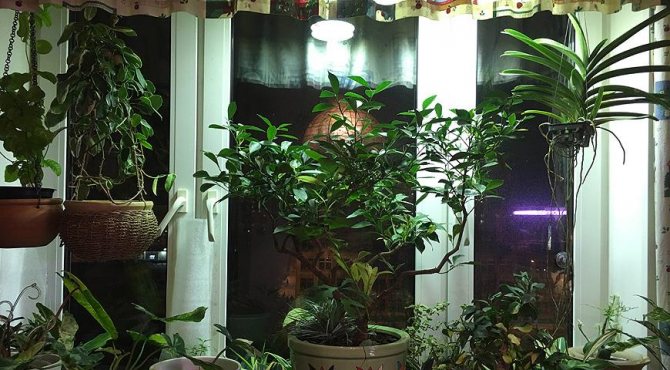

supplementary lighting of indoor plants in winter
The best plant lamps.
A list of the best phytolamps was prepared according to the data of users from the Internet. The rating is not advertising and is subjective.
- Phytolamp Uniel LED-A60-9W / SP / E27 / CL ALM01WH. LED, bicolor, power 9 W. Luminous flux angle - 270. Suitable for indoor plants and seedlings.
Pros. Does not strain eyesight, standard E27 base, works at low temperatures (-20⁰ - + 40⁰). Long service life - 30,000 hours. Low price: about 500 rubles.
Minuses. The bright pink light irritates the eyes.
Uniel LED-A60-9W / SP / E27 / CL ALM01WH
- Navigator 61 202 NLL-FITO-A60-10-230-E27. Bicolor, LED. Improves green mass growth and fruiting. Suitable for home use. The price is about 300 rubles.
Pros. Long service life - 30,000 hours. Economical, standard E27 base.
Minuses. Room humidity should be below 70%, not suitable for use in complete darkness.
Navigator 61 202 NLL-FITO-A60-10-230-E27
- Phytolamp Spring 6 W. Energy saving, length 11 cm. Luminous flux angle 160⁰. Bicolor. Suitable for home use. The price is about 350 rubles.
Pros. Long service life, low price, standard E27 base. Works at temperatures from -20⁰ to + 40⁰ С.
Minuses. The bright pink light irritates the eyes.
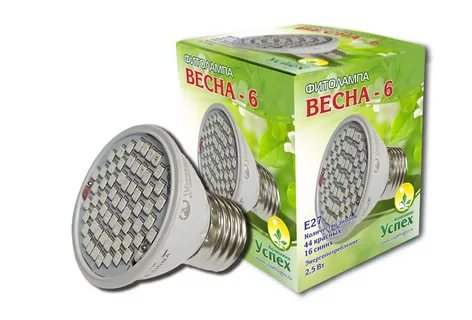

Lamp "Spring"
- Fitolamp "Garden Show", 15 W. Full spectrum, dominated by red and white waves. Good for flowering plants.
Pros. Standard base E27. Economical. Long service life - 40,000 hours. The light does not irritate the eyes.
Minuses. The minimum distance from plants is 20 cm, do not use for longer than 12-16 hours, high price (about 2500 rubles).


Garden show
- Flora Lamps E27 36W. Bicolor, LED, suitable for use in total darkness. It has a positive effect on growth and fruiting. Suitable for seedlings and short plants.
Pros. Standard base. Destroys bacteria. Economical. Long service life. Can be used around the clock.
Minuses. High price (about 2800 rubles).
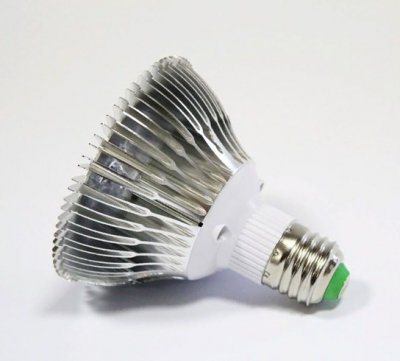

Flora lamps
What to highlight and for how long?
In winter, early seedlings, forcing greens and indoor plants are illuminated.
Features of winter supplementary lighting seedlings
From the moment of emergence of seedlings, the seedlings are supplemented without interruption for 3-4 days. Then 2-3 days are reduced to 16 hours a day, then to 14.
Thin phyto-lamps are used to illuminate the seedlings located on the windowsill. It is very convenient if such a lamp in the kit has its own set of fasteners. Most often they are attached directly to glass or to a window frame using suction cups, hooks or double-sided tape.
Seedlings in large numbers can be grown entirely under artificial lighting in special cabinets with a built-in lighting system. They are suitable for any room, however, if used in a cold room or basement, the plants will need to be heated. For such cases, there are ready-made greenhouses with lighting.
Features of winter supplementary lighting of indoor plants
It is advisable to extend the lighting of indoor plants in winter by 4–5 hours. For this, there are small lamps for illuminating one plant and huge complexes for greenhouses. To illuminate several plants at the same time, you can use a special tabletop phytolamp for indoor plants with an adjustable bracket. It is easy to move and looks like a regular lamp, suitable for home and office use. A small phytolamp can be used in winter to illuminate a blooming orchid so that it can expel more buds.


decorative lighting of indoor plants
The best plant lights.
- "Health treasure" for plants 16 W, 56 cm. Full spectrum LED lamp. Combines blue, red and white. Height adjustment from 10 to 500 mm. Power 16 W. Simple construction and installation. The price is about 2000 rubles.
Pros. Secure attachments, light does not irritate eyes, economical.
Minuses. Short cord: 1.5 m.


Health treasure
- Jazzway PPG T8i- 900 Agro 12w IP20. Suitable for fruit-bearing plants. Red to blue ratio: 5 to 1. Suitable for home use. Suspension. Lamp T8. Power 12V. Service life 25000 hours. Length 880 mm. The price is about 1000 rubles.
Pros. Availability. Mounts included. Easy. Possibility of suspension height adjustment.
Minuses. Luminous flux angle 120⁰. Pink light irritates the eyes.
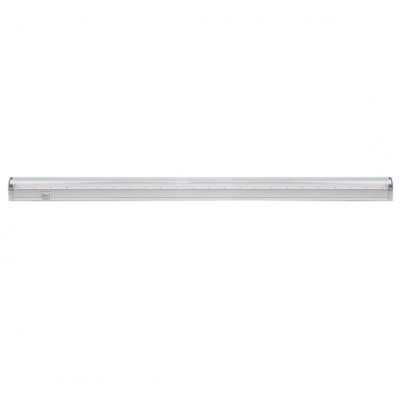

Jazzway PPG T8i- 900 Agro 12w IP20
- SPB-T8-Fito.The lamp is suitable for the most capricious seedlings: emphasis on the development of roots and stems. The kit includes two lamps, fixtures and wires. Base G13, T Price about 1000 rubles.
Pros. Reduced watering intervals. Does not heat up - minimum distance from plants.
Minuses. A short cord, the light strains the eyes.


SPB-T8-Fito
- Ladder-60. Pendant lamp 60 cm long. Suitable for greenhouses and home use. LED. Red to blue ratio: 4 to 1.
Pros. Waterproof, high luminous flux, not heated.
Minuses. High price (about 9000 rubles), light unpleasant to the eye.
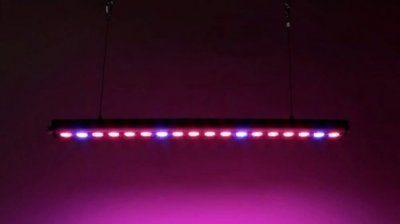

Leader-60
About
«Previous post
Popular turnkey solutions
For growing seedlings on the windowsill, you can buy ready-made solutions from manufacturers. In the list of the best lamps for seedlings phyto-lamps:
- "Sun";
- Alamak;
- "Khatisa";
- Wasat.
Phyto-lamp reflax "Sun"
The phyto-lamp "Solnyshko" is designed for illumination of flowers, seedlings; it is produced in several varieties with a power of 70-150 watts. The sodium-type device is designed to illuminate agricultural crops. The device is compact, optimal for use in rooms. The device is mounted for growing bushes on a table top or by a window on an area of about 1.5-2 m².
The power can be varied for the type of crop grown. During operation, it is important to comply with the manufacturer's requirements and turn off the device no earlier than 5 minutes after connecting. When illuminated, seedlings acquire a rich green color, immunity for transplanting into open soil or a greenhouse. When flowers and fruiting plants are grown, fruit ovaries and buds begin to form. The device is realized with an adjustable bracket for fixing to a table, shelves, windowsill.
Table phyto-lamp "Alamak"
The Alamak device is designed to illuminate seedlings in an apartment. The light radiation of the device contributes to the formation of a bush resistant to open ground conditions and greenhouses. The phytolamp design is compact, ergonomic, easy to install. The model is equipped with a bracket with adjustable height. The lamps in the device are LED, the power of the device reaches 540 lux.
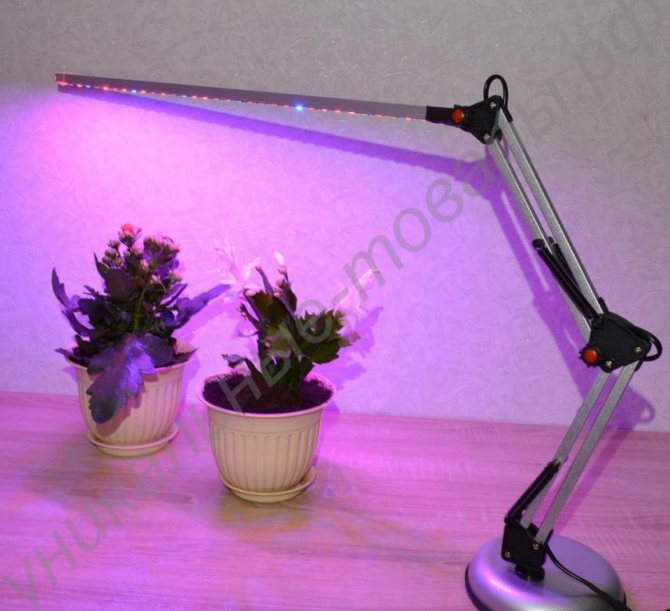

The illumination of the device is full-spectrum, stimulating the process of plant photosynthesis. A power supply unit and an electric wire 1 m long are supplied with the device. The backlight power is regulated in the design. The permissible height of the device is 48 cm.The distance of the device from the leaves is limited by the manufacturer and is 5-20 cm.
Led table lamp for plants "Hatisa"
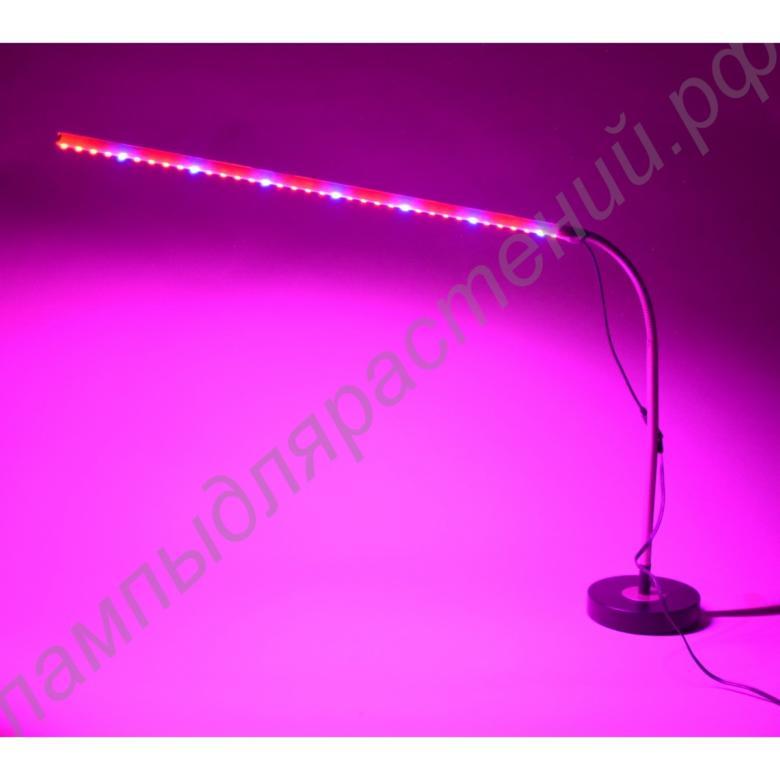

Tabletop lighting device "Khatisa" is designed for indoor use. Stylish design allows you to place the device in office premises, study rooms to illuminate small greenhouses, flower beds. The device is equipped with LED lamps. The height of the structure can be varied (5-50 cm), the luminous flux of the device reaches 800 lux. The bicolor lamp works up to 100,000 hours. The kit includes an adapter and electric wires. The dimensions of the device are 50x15x10 cm.
Wasat LED window lamp for plants
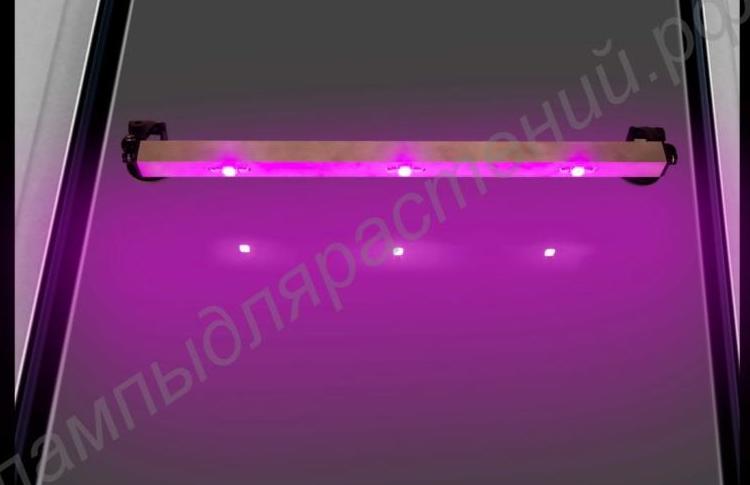

The LED device "Wasat" is supplied with fasteners and is intended for installation on a windowsill, table-top. The device is economical in power consumption, compact, with high luminous efficiency. The body is made of aluminum alloys, equipped with 30W LEDs. The design can vary in length (80-120 cm), the width reaches 3 cm, the thickness is 3 cm. The bracket can be adjusted in 3 planes. The area of the illuminated space is 20-50 cm. The device is equipped with a power supply unit, a wire 1.2 m long.
Is daylight enough
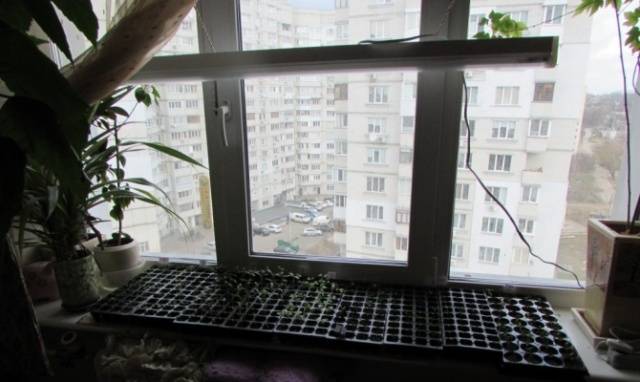

Lack of daylight due to short day lengths is one part of the problem. Seedlings stand on the windowsill behind each other.Plants closer to the window shade distant plantings. And if there is a rack on the windowsill, the light falling from the top from the window, close the shelves of the higher tier. The second problem arises - the lack of lighting during the day.
The seedlings begin to reach for the cocoon glass. The stems become thin. The leaves are lethargic, underdeveloped. They try to solve the problem by turning the boxes. From careless movements, the sprouts break or fall to the ground.
Advice! To enhance the intensity of natural light, reflectors made of mirrors or foil, installed opposite the window glass on the other side of the drawers, help. However, in cloudy weather, the method is useless.


